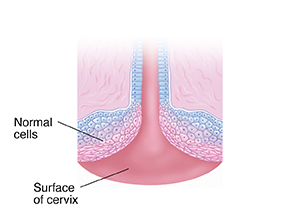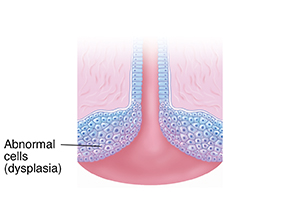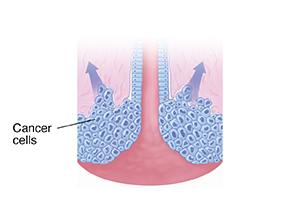Understanding Changes in Your Cervix
Your cervix is the lowest part of your uterus. Cells in the cervix are always changing. In some cases, these cells can change to become abnormal. This is called dysplasia. Dysplasia can turn into cancer. But with regular Pap tests, dysplasia can be caught and treated early.

The role of the cervix
The cervix is circular. It connects the uterus to your vagina and provides a passage for menstrual blood and sperm. During pregnancy, it helps hold the fetus inside your uterus. During birth, the baby passes through the cervix during childbirth.
How problems may form
Normal cells in the cervix flatten as they grow. They form a protective layer as they move toward the surface of the cervix.

Dysplasia starts when cells on the surface of the cervix change in ways that are not normal. Cells may grow irregularly. They may become cancer.

Invasive cancer occurs when abnormal cells spread. They move from the surface into deeper parts of the cervix. They may then spread to other areas of the body.

Online Medical Reviewer:
Donna Freeborn PhD CNM FNP
Online Medical Reviewer:
Heather M Trevino BSN RNC
Online Medical Reviewer:
Irina Burd MD PhD
Date Last Reviewed:
8/1/2022
© 2000-2024 The StayWell Company, LLC. All rights reserved. This information is not intended as a substitute for professional medical care. Always follow your healthcare professional's instructions.